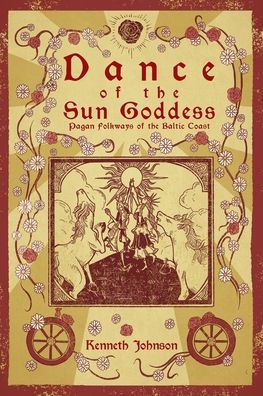A note on methodology first here – the mythology which Johnson is exploring has been, he argues, principally carried along from ancient times in folk songs. So, he extracts themes and ideas from folk songs, which is a good place to start, except that he does not speak the languages of Lithuania, Latvia, and Estonia and has relied on translation programs and then taken the translations from these sources and reworked the songs to suit his personal poetic and spiritual understanding of the songs.
Since the Pagan traditions of all three of these countries are alive and well, thriving, even, with 4,000 followers of Romuva in Lithuania, 700 followers of Dievturība in Latvia, 3,860 of Maausk and 1,770 of Taarausk (two separate Pagan religions) in Estonia, it is striking that Johnson did not draw from writings of the actual followers of the religions he talks about. In particular because there is a substantial body of writing by Romuva leaders and scholars like Jonas Trinkūnas, Michael Strmiska, and Milda Alisauskiene available in English. Instead, he draws from the scholarship of Marija Gimbutas (to his credit, acknowledging problems with her early work which Gimbutas herself walked back from later in life), some standard works of the Goddess spirituality movement, and Joseph Campbell, none of which are directly dealing with the Balts (except Gimbutas).
Johnson loves the diffusionist approach which has fallen out of favour in anthropology – arguing that there was one original religion, one original language, and so all of the religions and languages can be seen as fundamentally the same and we can borrow elements that fill in perceived holes in our understanding from wherever it suits us. Joseph Campbell’s uber-myths are well-known examples of this approach. It leads to unselfconscious cultural appropriation, taking out-of-context.
Johnson briefly introduces various goddesses and gods, talks about folk traditions and seasonal observances connected to them, and draws a number of parallels with other religious traditions, some widely separated from this area (what does a Shoshone ritual have to tell us about this, or a Hindu deity’s observances? Although drawing from Slavic and Norse sources makes more sense).
So, what we have here is not a substantial work of scholarship, but an impressionistic pastiche, based in a neo-Pagan understanding. Johnson is effectively riffing off of some songs and stories from the Baltic nations to create a set of stories reflecting his neo-Pagan synthesis of various elements, some of which resemble what the Baltic religions might be like. It is entertaining and plausible, reads well. I had hoped for more insight into the “Pagan folkways of the Baltic Coast” specifically, however.
~ review by Samuel Wagar
Author: Kenneth Johnson
Crossed Crow Books, 2024
220 pg. Paperback £20 / $35 Can / $25 US

